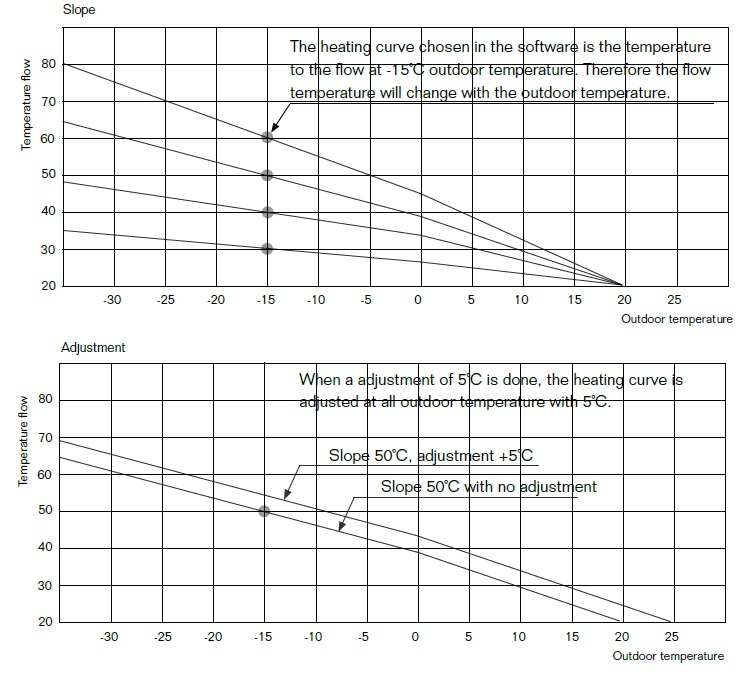Making energy systems proactive is a logical step forward in improving building energy efficiency
Proactive building energy systems can increase energy efficiency, improve comfort, lower energy costs, reduce peak energy loads, and increase property values.
What is a proactive building energy system?
A proactive building energy system uses forward-looking input factors such as a building’s thermal momentum, near-term weather forecasts*, and demand costs to help determine system outputs. Artificial intelligence (AI) software uses strings of data inputs and self-learning to calculate outputs and optimize system performance.
A proactive energy system can be an add-on part of a very basic system, or it can can be integrated with a complex building management system (BMS) using open protocols or something else.
Contrast with today’s reactive energy systems
Nearly all building energy systems in North America today are reactive. A typical example would be a temperature set-point being reached which triggers a relay that starts or stops one or more devices (e.g. pump, boiler, chiller). There may be a variable component to the output, such as a distribution temperature selected from a heating curve. Commonly, a PID control determines the targeted output . The production and distribution technologies themselves (e.g. condensing boilers, variable speed heat pumps, low-temp hydronic distribution, etc.) may be high efficiency in a stand-alone sense. Nevertheless, they are limited by the narrow range of input data that are available to them.
Key differences between reactive and proactive system control
When external factors are changing quickly as is typical with nearly constant changes in weather factors (such as temperature), or when demand rates kick in, the reactive system loses its ability to optimize energy inputs.
Proactive energy systems on the other hand, use a range of data that includes forward-looking data that feed dynamic algorithms. With proactive systems, there can also be some automated learning involved as improvements build on past improvements. This is where AI can play an important role. The AI is used to determine thermal inertia and thermal momentum, both of which are important for maintaining targets without over or under performance. Reactive controls don’t have this ability.
Fortunately, there are more similarities than differences. Proactive systems and reactive systems use the same building assets. So from an upgrade perspective, it can be very easy to make the change.
Examples of proactivity in our lives
Although you may not have thought about it in this way, being proactive is a natural part of our everyday lives. There are countless examples of being proactive that illustrate this point.
Here are a just a few examples from one thing many of us do every day: drive a car. Imagine you’re behind the wheel of your car and you’re driving down the  road. You see a sign that says “Stop Ahead”. This is an opportunity to be proactive. You can take your foot off the accelerator and let the momentum of the car carry you forward to the stop line. That’s proactive and saves a little bit of energy. Now imagine you’re on a highway and you see a sign that says “Exit Right 1 Mile”. If that’s your exit, you can look for a good opportunity to move over to the right lane. That’s also being proactive. A third example is when you drive with your high beams on at night, you’re gaining more “visual data”; you can be more proactive in dealing with upcoming road hazards.
road. You see a sign that says “Stop Ahead”. This is an opportunity to be proactive. You can take your foot off the accelerator and let the momentum of the car carry you forward to the stop line. That’s proactive and saves a little bit of energy. Now imagine you’re on a highway and you see a sign that says “Exit Right 1 Mile”. If that’s your exit, you can look for a good opportunity to move over to the right lane. That’s also being proactive. A third example is when you drive with your high beams on at night, you’re gaining more “visual data”; you can be more proactive in dealing with upcoming road hazards.
Of course, being proactive doesn’t necessarily have to lead to greater efficiency. Proactive measures in energy are worth doing if they help achieve an objective like lower energy use, lower demand charges, or higher comfort.
Thermal momentum quantified and used proactively
Being proactive helps increase efficiency in cases where momentum (including thermal momentum) and inertia are significant factors. Thermal momentum is identified and used by AI for proactive control.
As momentum is the product of mass and velocity, higher mass leads to higher momentum. As an example of this concept, heavy trucks benefit more from that “Stop Ahead” sign than does a car, and the car benefits more than a bicycle. A pedestrian may not benefit at all. So the greater the mass, the greater the momentum, and this is true in buildings as well. Proactive AI control can account for momentum and inertia, and use it to improve overall efficiency.
A multifamily building is full of walls, floors, ceilings, carpeting, furniture, and plumbing. Therefore it is relatively dense. An empty airplane hangar, a big space filled with nothing but air, is not dense. As a result, changes in thermal energy can occur much more quickly in the hangar (assuming the building size, energy systems, and building envelopes are equivalent). Because the multifamily building is denser, it takes longer to heat up, and is slower to cool down. All that mass inside the building is a heat sink. That mass is absorbing and radiating back out thermal energy constantly. If a heating system reacts to a set point being reached, and stops pumping heat into the building, that building mass will continue to radiate heat back into the living space. If the outdoor temperature rises or sunlight streams in, the interior of the building can become overheated.
Consistent building temperatures with proactive control
Another thing we can say about the multifamily building is that steady temperature is important to the people that live there. Zeroing in on a set point temperature is a challenge that is easier with AI and proactive control. Multifamily building owners know that the alternative to consistent indoor temperatures is either complaints, open windows in winter, or both. It also can lead to higher energy costs, increased tenant turnover, and lower rents.
Lowering demand peaks in district energy with proactive control
In cases where there is an energy demand rate**, it’s possible for a proactive energy system to optimize operation to pre-load heating or cooling, and to hold back from the high demand peaks that drive demand charges. As noted earlier, this is a valuable tool where building mass can be used to advantage. This is most common for buildings connected to district energy networks, but is evident in other energy scenarios as well.
Other applications for proactive energy control
Besides thermal energy, as described above, there are other forms of energy consumption that can, and sometimes do benefit from proactive control.
- Natural gas consumption
- Electrical power (demand response)
- District energy (heating or cooling)
- Chilled water /sensible cooling
*useful weather data may include the timing of upcoming temperature, sunlight, wind, and precipitation.
**energy demand rate – charged by some district energy utilities and electric utilities. Demand charges may be tiered, and can vary by time of day and time of year. In some cases demand rates change daily, with a day or less of advance notice. Demand charges help utilities pay for the higher marginal cost of supplemental energy sources, or the cost of infrastructure needed to meet peak demand.
© 2019



